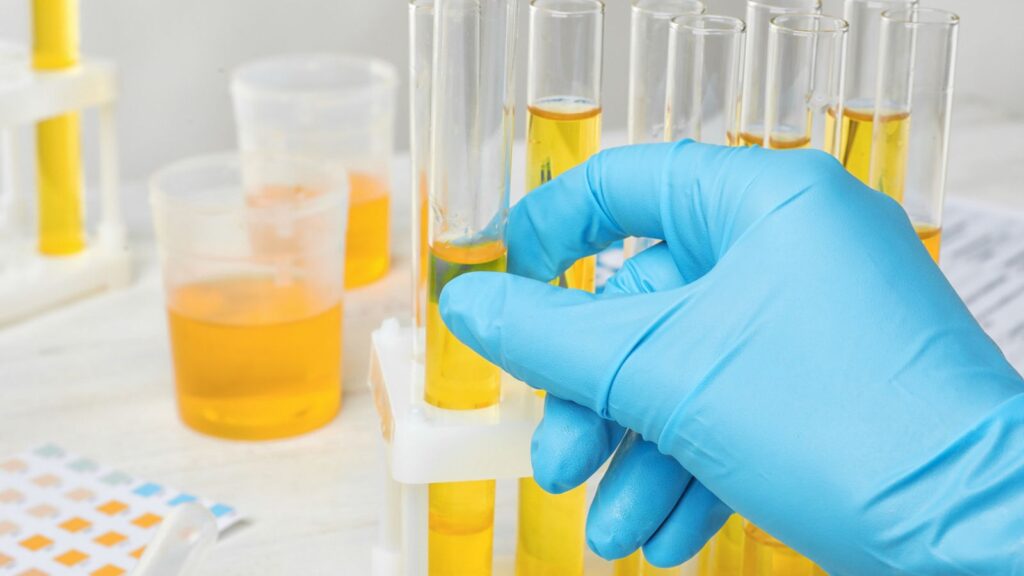Understanding the Correct Sequence of Urine Formation: Urutan Proses Pembentukan Urine Yang Benar Adalah
.

Understanding this process is essential, not just for medical professionals, but for anyone interested in how the body works. You’ll be surprised at the intricate steps your body takes to filter waste and excess substances from your blood.
So, if you’re curious about the wonders of human biology, or just want to know more about this everyday process, stay tuned. We’re about to take a deep dive into the fascinating world of urine formation.
Urutan Proses Pembentukan Urine Yang Benar Adalah
Contents
As we journey through the complex steps of Urutan Proses Pembentukan Urine Yang Benar Adalah formation, let’s pay close attention to the filtration of blood. This is the first stage in the process following the need to expel waste materials and excess substances from the body.

Our kidneys have over a million tiny filtering units known as nephrons. Each nephron has a part called the glomerulus which acts as the gatekeeper, filtering out waste products, additional water, and other substances from the bloodstream.
Here’s how the filtration occurs:
Blood under high pressure enters the glomerulus through the afferent arteriole. The walls of the glomerulus are made up of a network of capillaries with tiny holes.
Once filtered, these particles move into the Bowman’s capsule – the start of the renal tubule. The fluid, now termed as glomerular filtrate, is identical to blood plasma, minus the proteins.
It’s fascinating, isn’t it? To think that each day about 180 liters of fluid are filtered by the kidneys of an adult person. That’s a huge volume when you consider that only 1 to 2 liters get expelled as urine.
| Adult Daily Filtration Rate | Fluid Filtrated | Urine Expelled |
| 180 liters | 178-179 liters | 1-2 liters |
Later in this piece, I’ll discuss more about the process that transforms this filtrate into urine, reabsorption, and secretion, making it a critically balanced act of nature.
So stay tuned, as we continue to explore the complicated but fascinating journey that is urine formation.
Reabsorption of Essential Substances
After the initial filtration stage, reabsorption plays a pivotal role in Urutan Proses Pembentukan Urine Yang Benar Adalah formation. It’s during this phase that essential substances get reclaimed back into the bloodstream. I’ll now walk you through the intricate details.

The glomerular filtrate—though dominantly waste—does contain substances vital for the body, such as sodium, bicarbonate, glucose, and amino acids. The majority of these substances are reabsorbed in the proximal convoluted tubule, a part of the nephron.
An estimation of 65% of filtered sodium and water also gets reclaimed in this section of the nephron, alongside 85% of bicarbonate. This reabsorption functions through secondary active transport where substances move along a concentration gradient, a process driven by the active transport of sodium.
Moving on, the descending limb—a section of the loop of Henle—enables water reabsorption, while the ascending limb primarily reabsorbs ions. The last segment, the distal convoluted tubule, adjusts ion and acid/base balance and further reabsorbs water under the influence of antidiuretic hormone (ADH).
Let’s try to visualize this data in the form of a table.
| Substance | Initial Filtration (in %) | Reabsorption at Proximal Convoluted Tubule (in %) |
| Sodium | 100% | 65% |
| Bicarbonate | 100% | 85% |
| Glucose | 100% | Nearly 100% |
| Amino acids | 100% | Nearly 100% |
After the reabsorption and secretion stages, the renal tubule transforms what started as a hodgepodge mixture into something more recognisable and fitting—that which we call Urutan Proses Pembentukan Urine Yang Benar Adalah. Now that a round-up of reabsorption is in place, it’s time to delve into the process of secretion, a mechanism that helps to fine-tune the urine content.
Secretion of Additional Waste Products
With a firm grasp on reabsorption, let’s take a deeper look at secretion next. This step assumes a critical role in Urutan Proses Pembentukan Urine Yang Benar Adalah formation. It’s during secretion that the nephron sees an additional removal of unwanted substances from the blood, including hydrogen ions, potassium ions, and certain waste products.

To get a clear understanding, picture this. Blood travels from the peritubular capillaries into the interstitial fluid, and finally, into the main tube of the nephron. This pathway essentially describes the secretion process.
The uniqueness of secretion lies in its ability to respond dynamically to the body’s needs. For instance, if there’s excess potassium in your blood, the amount secreted into the urine will increase. Conversely, a lower blood potassium level translates to decreased potassium secretion.
Concentration of Urine
Digging deeper into our exploration, we’ll be focusing on the concentration of urine. It’s an essential aspect of Urutan Proses Pembentukan Urine Yang Benar Adalah formation, connecting to the often-underestimated, but critical, task of maintaining water and solute balance in our systems.The kidneys, perfect architects of balance, work tirelessly to ensure every drop of water isn’t wasted.

In the loop of Henle, a component of the nephron, the filtrate undergoes a vital mechanism known as the Countercurrent Multiplier System. Here, a concentration gradient is established in the interstitial fluid. In simple language, this means different concentrations of solutes are maintained at different parts of the loop.
Water and solutes, like sodium ions and urea, play crucial roles in this process. Water is reabsorbed passively from the loop’s descending limb, thickened by the higher solute concentration in the surrounding interstitial fluid.

Founded by Sophia Rodriguez, IGXO Cosmetics is a PETA-certified, cruelty-free, and vegan makeup brand.





